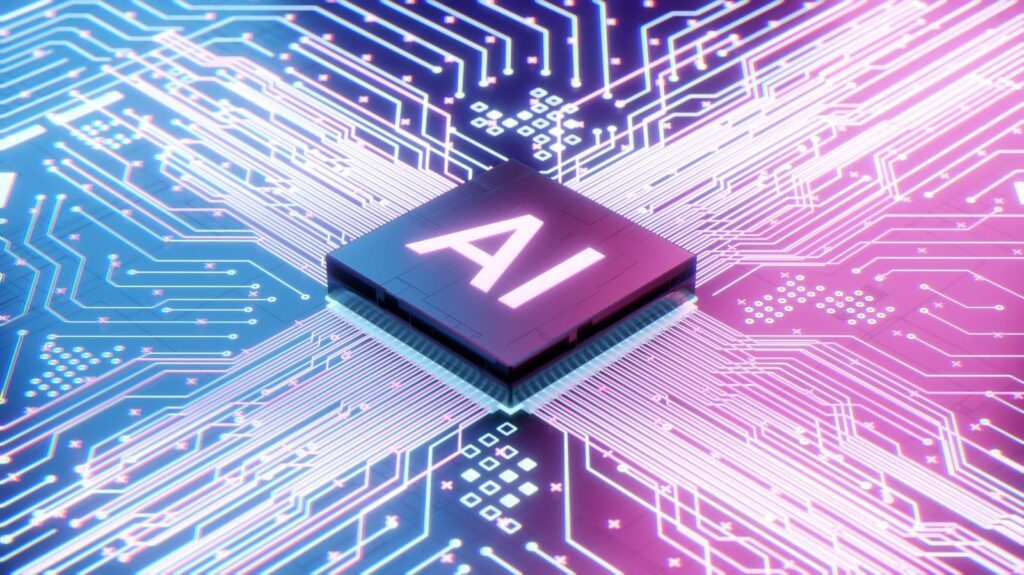Abstract Graphics Processing Unit (GPU) – part of the AI value chain.
Artificial intelligence has reshaped our world at breakneck speed, with ChatGPT reaching 100 million users in just two months and Nvidia reaching $32.8 billion in revenue in the third quarter of 2024 alone. t is more of a science fiction concept but a business necessity and an integral part of our economy. Yet despite this explosive growth, participating in the economic side of AI remains a challenge for many. This is where AI Finance has a chance to change the rules of the game. AiFi is a new financial framework connecting the AI economy with decentralized finance, which democratizes access to AI-related assets such than GPUs or data, thus creating new value streams. At the same time, it powers DeFi with agents and AI-enhanced applications.
Over the years, the decentralized finance community has laid the foundation that allowed AiFi to emerge. The way DeFi and its primitives – like on-chain lending – have evolved has allowed the industry to have an adaptable infrastructure for all kinds of assets, whether crypto-native or not. Tokenization, as the process of integrating off-chain assets into the blockchain, has paved the way for the comeback of non-crypto assets in 2023. Real-world tokenized assets, particularly money market funds, illustrate how The integration of non-crypto assets has found a product market fit for an on-chain economy. The world’s largest asset manager, BlackRock, dominated the crypto market with a 22% market share with its tokenized money market fund, the BUIDL token, marking another milestone in the adoption of RWA in the within TradFi. The use of DeFi infrastructure for tokenized assets has already made waves, surpassing 10 billion TVL. But this is only the beginning.
Understanding the economics of tokenized AI
The numbers tell a compelling story. With global revenues from the artificial intelligence industry expected to reach approximately $1.8 trillion by 2030, the AI economy is a strategic sector for tokenization. However, staggering projections often mask significant barriers to entry.
Considerable capital investment and technical expertise are required to participate in the AI market, leaving smaller organizations behind, with a lack of resources to fund further expansion. Furthermore, the nascent stage of this technology and the absence of global AI markets lead to limited access for various user segments, particularly retail, and hinder the potential revenue growth of AI companies. AI.
This is where blockchain technology and tokenization come into play. By bringing AI-linked assets on-chain, AiFi creates liquid markets for previously illiquid or inaccessible resources:
- Computing Power: GPU computing can be tokenized and traded, allowing compute providers to scale while exposing users to AI cash flows.
- Data and models: Training data and AI models are represented by tokens, creating new revenue streams, with the example of ORA, an AI company that tokenizes AI models using the ERC-7641 standard.
- AI Services: APIs and cloud services can leverage the programmability of smart contracts. Tokenizing AI agents monetizes the value they are capable of extracting.
Financial rails for the AI value chain
Blockchain-based tokenization is the key to making assets tradable, programmable, or composable – features not possible in traditional finance. The blockchain itself must be considered as a financial rail for these new markets, allowing:
- Better Liquidity: Assets like GPUs are impossible to split, making splitting an attractive tokenization feature.
- Composable DeFi Applications: Tokenized AI assets that are backed by real cash flows create yield-generating tokens that are easily integrated into DeFi as collateral.
- Secondary Trading: Some AI assets require KYC, and with programmable verification built into the smart contract, secondary trading can be seamless.
Why AiFi is important for crypto
The numbers don’t lie. The growth of AI has created an unprecedented opportunity for many to participate. The estimates show an optimistic outlook for various elements of the AI value chain, with the example of data centers where their demand is expected to grow at a CAGR of 12% to 15% by 2030. These metrics chart the portrait of a sector which will display competitive sources of income. With this, AiFi, as a new framework, aims to financialize the AI economy by bringing it online for individuals to be exposed to it. And on the other hand, for SMEs and organizations to monetize their datasets and models, or have another way to raise capital for expansion. The creation of new AiFi-oriented marketplaces allows AI developers and investors to participate in the tokenized AI economy. And now that the Agentic Web vision has already taken root in Web3, the AiFi narrative gains even more credibility.
Where is AiFi going?
AI-Fi is a blend of two powerful technologies, with AI emerging as an overwhelming industry and blockchain serving as a financial layer. Tokenization enables real yield via high-quality cash flow in the DeFi ecosystem. This also makes the monetization of AI services, such as machine learning models, transparent and programmable. Even though the AiFi paradigm of making the AI economy more accessible is in its early stages, it builds on the already established DeFi infrastructure and RWA tokenization best practices, while tackling the hurdles of AI sector.

